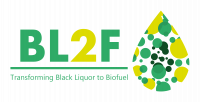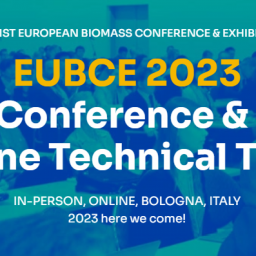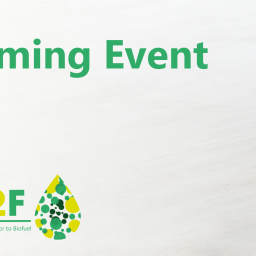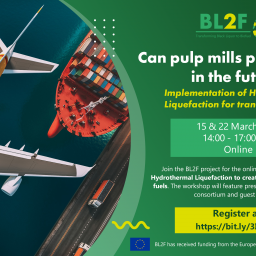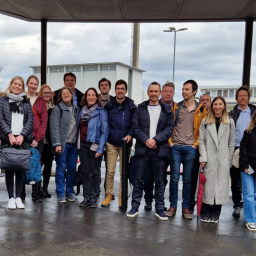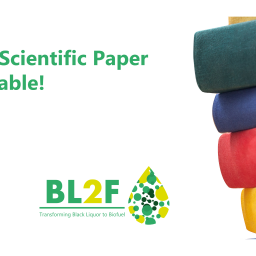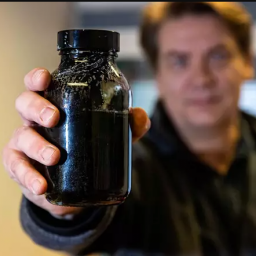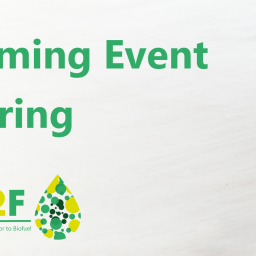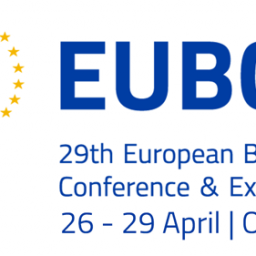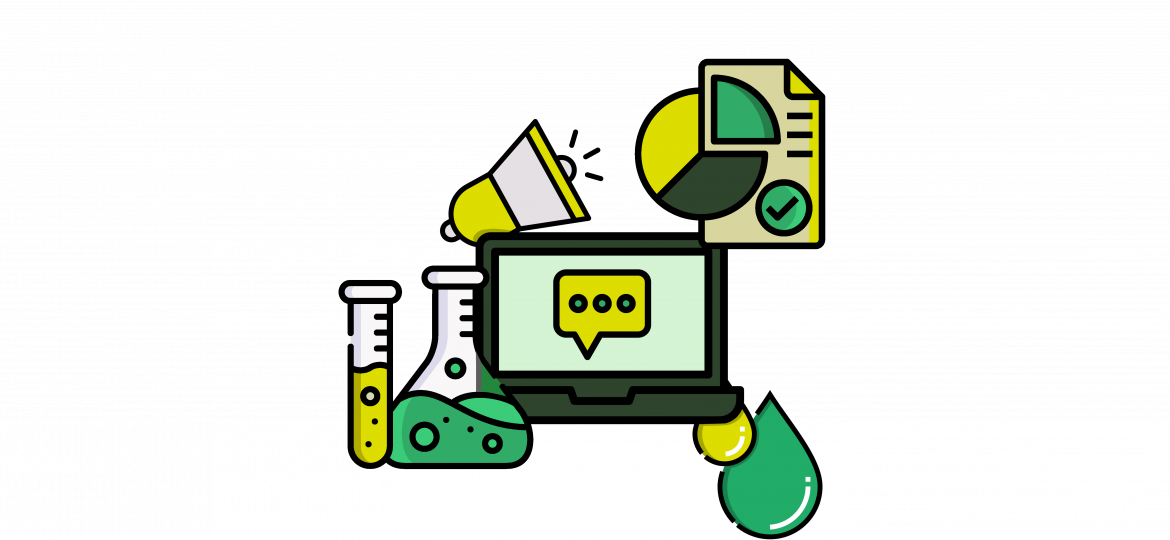
Check out what the BL2F partners have been up to over the past 12 months
Work package 1: HTL-OIL Production
The batch reactor tests at Karlsruhe Institute of Technology were completed in spring 2022. The tests were conducted with a real black liquor sample and a “model” sample, developed from a mixture of commercial chemicals. In addition, TGA results were generated for a kinetic model concept. The aimed experimental tests with a continuous HTL pilot plant have been delayed from the originally planned timetable. The pilot plant was under commissioning throughout spring 2022 and the first EHTA pilot test runs with salt separation were conducted with real black liquor feedstock. The first biocrude oil samples were characterised. The first laser on-line measurements were done in connection with EHTA testing. Some challenges were met concerning luminescence. The revised design of the on-line testing equipment was done based on the observations.
A thorough selection of materials and corrosion testing was conducted at SINTEF in 2021. In spring 2022, 4 different candidates with the most potential were selected and further exposed for long-term corrosion testing. The corrosion study was successfully performed, and the best candidate material was selected. Considering the modelling subtask, one aim was to develop a scale-up mathematical model for the IHTL process. Suitable software tools such as Excel and Aspen Plus were equipped for the work. Because of the delays in EHTA testing at Tampere, suitable input data was collected from scientific publications, and the first version of the IHTL process scale-up model with Aspen Plus software was developed and used. A revised design basis of the CFD-based model for the HTL reactor has been developed.
Work package 2: Salt Recovery & Side Stream Valorisation
Phase equilibria of model salt solutions, replicating that of black liquor (BL), were investigated to better understand how to influence efficient salt extraction by inducing the Type 1 behaviour of salt mixtures under supercritical conditions (Type 1: formation of a liquid brine, Type 2: precipitation). Two distinguished strategies to optimise the salt precipitation during HTL of BL were assessed. It included the enrichment of the salt mixture with Type 1 salts (Strategy 1) and the depletion of Type 2 salts (Strategy 2) by reducing the concentration of one or several of them. The influence of organic compounds on salt separation efficiency was also assessed by adding acetates into the inorganic model salt solutions. The pre-validated strategies were assessed and validated in the PSI’s continuous salt separation test rig about the overall salt separation efficiency. Although Strategy 1 prevented the plug from forming, it could not fully avoid salt accumulation inside the vessel. Reducing Type 2 salt concentration might be promising since higher salt separation efficiency and no plug formation were observed. The results pave the way for the integration between salt separation and HTL to the valorisation of black liquor into crude.
Another task of the work package aims to investigate hydrogen production from BL-derived waters via an aqueous phase reforming reaction. Several transition and noble metal catalysts have been evaluated with model compound mixtures in a continuous plug-flow reactor at VTT. Tested model compounds (MeOH, phenol, and 4-methylcatechol) were selected based on HTL batch experiments and KIT in WP1, as well as in the literature. Fresh and spent catalysts have been characterised extensively to understand catalyst deactivation mechanisms and to speed up catalyst selection for tests with process waters. The experiments with the aqueous phase (AP) have been delayed due to technical issues in the HTL pilot plant at TAU Tampere campus, and the first batch of AP from the HTL pilot was received in March 2023. Received waters are currently under characterisation to identify main components, salt, and sulphur concentrations.
Work package 3: Upgrading & Application Testing
The work on the upgrading of HTL oils has concentrated on the first stage of the upgrading, the integrated hydrodeoxygenation. The hydrothermal conditions have proved very demanding for the HDO catalysts, and therefore a lot of focus has been put on the development and testing of stable hydrotreatment catalysts. Stability studies of catalysts developed and synthesised by Ranido have been carried out both at VTT and PSI in batch and continuous flow reactors, respectively, and based on the results, the most promising catalysts have been selected for further upgrading studies. VTT has studied the hydrothermal HDO using model compounds and lignocellulosic HTL oil, investigating the effect of reaction conditions, i.e., sub-, and supercritical water conditions on the results. PSI has developed continuous flow hydrotreatment using transfer hydrogenation for model compounds.
Work package 4: Techno-Economic Assessment
The process design to produce liquid biofuels using black liquor from pulp mills is now completed. The overall production route includes two differentiated stages. First, the black liquor is converted to an oil phase, namely biocrude, in a decentralised plant that is integrated into the pulp mill. The second stage is a further upgrading of the biocrude to liquid biofuels in a centralised refinery. The conversion of black liquor to biocrude includes several novel processes under development within the BL2F project: 1) integration of salt separation and hydrothermal liquefaction in the same reactor, 2) hydro-deoxygenation of the liquefaction product in supercritical-water conditions, and 3) catalytic reforming of process water to produce hydrogen required by the hydro-deoxygenation unit. The upgrading of the biocrude to aviation and marine biofuels includes multi-stage hydrotreating of biocrude with separation of inorganics and catalytic reduction O, N, and S heteroatoms followed by fractionation to naphtha, kerosene, and heavy distillate ranges. The naphtha is further processed by hydro-isomerisation to aviation fuel quality. Kerosene is directly used as jet fuel. Depending on the composition, the heavy distillate can be used directly as marine fuel or treated in a hydrocracking unit for further production of naphtha, kerosene, and lighter distillates. The integration of the HTL plant and the pulp mill has been defined in collaboration with the Navigator Company and Valmet. The main approach has been to gain first a good understanding of the current design and operational limits of the pulp mill, particularly of the evaporator, the recovery boiler, and the steam cycle. Critical aspects in the integration include the performance of the evaporator due to an increase of the moisture content, an increase of the viscosity of the recovery boiler feed affecting the performance of the injectors, reduction of the energy output from the recovery boiler and thus the electricity production in the steam turbine, and the balance of Na and S compounds in the recovery cycle. Then, the terminal points at the pulp mill for extraction of the black liquor and for return of the precipitate from salt separation, the aqueous effluent, the solid residue, the gas stream from the HTL plant, and the heat extraction have been identified.
Work package 5: Sustainability Assessment
In the last year, the WP5 activities have been based on the development of the environmental, techno-economic, and circularity assessments of the comparison between the traditional pulp mill and the consideration of different percentages of the black liquor going for the hydrothermal liquefaction unit (concretely 5%, 10%, and 15%) to produce biocrude. To develop those studies both mass and energy balances have been developed, based on the inputs provided by other partners of the BL2F project. On the other hand, regarding the circularity studies, both performance and environmental indicators have been scored and analysed, considering also certain assumptions according to what could be found in the literature and based on expert knowledge. The next step is the upgrading of the biocrude to obtain biofuels for both the aviation and shipping sectors. Now we are working on the development of the mass and energy balance to be able to develop the aforementioned assessments, and to provide comparisons between conventional fuels.
Work package 6: Market Potential & Exploitation
In WP6, the Replicability report was submitted and analysed other potential feedstocks from black liquor, such as bark and sawdust that could be used for the BL2F technology. Otherwise, ongoing work is focused on the exploitation and protection of intellectual property until the end of the project, along with benchmarking the BL2F competitors.
Work package 7: Dissemination and Communication
Over the past year, the WP7 team has continued to promote the BL2F project and its results on social media and the website, while also coordinating and promoting partner participation in conferences and events.
One of the main activities included the promotion of the presentations of the Mid-Term Workshop through tailor-made videos. A dedicated webpage was created to make these videos easily accessible to interested stakeholders.
Another key activity was the production and release of the project video, which served to raise awareness of the project, the challenges it seeks to address, and the solutions it proposes. The video explains the problem of rising greenhouse gas emissions from the transport sector, as well as the key concepts of the project: advanced drop-in biofuel, black liquor, integrated hydrothermal liquefaction, hydrothermal hydrodeoxygenation, and aqueous phase reforming.
Last but not least, WP7 concentrated its efforts on the organisation of the BL2F Summer School “Intermediates to renewable fuels: Refinery of the future”, which was held on the 13th– 14th of June 2023 at KIT Campus North in Karlsruhe, Germany. The two-day event was a success, bringing together Ph.D. students and young scientists interested in intermediates to renewable fuels. Fruitful discussions and exchanges took place, and valuable connections were made.
As the project draws to its end, WP7 will continue to focus on disseminating results and publications to key stakeholders to maximise the project’s reach and impact.
Work package 8: Project coordination
Project management and coordination have continued successfully, but unfortunately due to delays in the pilot test runs the overall project schedule required a half-year extension. The new end date for the project is the end of March 2024. Regular project meetings and active internal communication through the established platforms enhance good collaboration within the project. During the past half a year, project members have also managed to meet in Villigen, Switzerland, hosted by PSI in March 2023. In addition, regular online meetings have taken place, and members of the coordinating organisation, TAU, continue to meet on a weekly basis to prepare the project meetings and to regularly check the status of the project, for instance, the progress of the deliverables.
